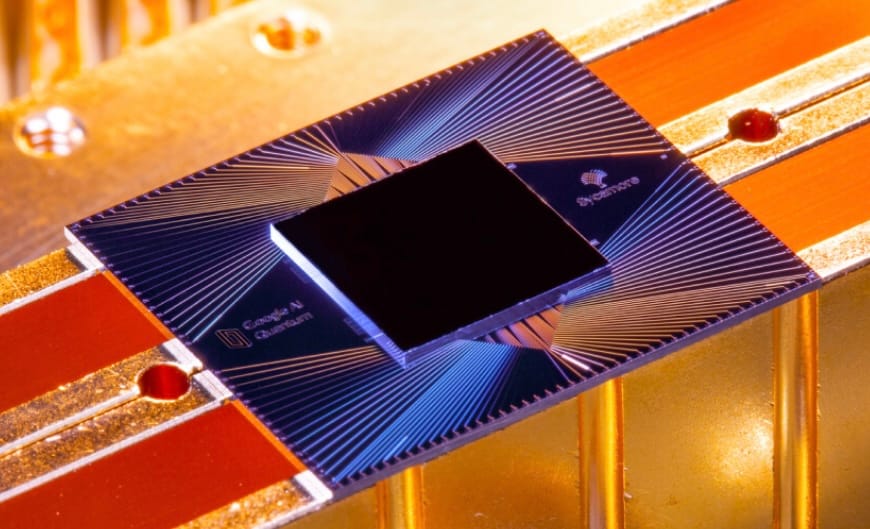What is "Willow" From Google Quantum AI and Why This Changes Everything!

Google’s Willow quantum processor has just made a major leap forward, and if you’re like me, you’re probably trying to wrap your head around what makes this such a big deal. For years, quantum computing was something we talked about in the abstract. The potential was there, revolutionizing everything from healthcare to artificial intelligence but it always seemed like we were just on the cusp of something big, without quite getting there. Willow feels like that moment when it all clicks into place.
Willow is a quantum computing chip launched by Google. To understand what it does, let’s quickly recall how quantum computers work. As discussed in our article about nanotechnology, they use qubits (the quantum equivalent of the bits in classical computing). While a regular bit can be either 0 or 1, qubits would be some state in between (that is what superposition does). In a video, researchers at Google explained how they make these qubits by putting aluminium on silicon in a special pattern and that pattern is the quantum bit. Imagine a coin spinning in the air, it’s not heads or tails until it lands or it is both heads and tails until it lands. This gives quantum computers the ability to handle much more complex problems and data than classical computers, all in parallel.
There is a ‘but’ here though, they are easily disturbed by their environment, and the more qubits you add, the harder it becomes to keep everything in sync. This is where quantum error correction comes in. As we scale up the number of qubits, the errors usually increase, potentially they can undo the work of the quantum processor. For years, researchers struggled with this, and it was one of the biggest roadblocks to building practical, large-scale quantum computers.
That’s where Willow truly shines. Google has solved one of the hardest problems in quantum computing: scaling up quantum error correction without introducing more errors. Willow is the first quantum processor to achieve what’s known as “below threshold” error correction. In simpler terms, as more qubits were added, the error rate went down, not up. This is a historic achievement, and it’s something that quantum researchers have been working towards for over 30 years. This breakthrough not only makes Willow incredibly powerful but also signals that quantum computers may soon be able to scale to useful, real-world problems. If errors aren’t corrected fast enough, they can ruin the entire computation. Willow fixes any errors and it does so in real-time while running its calculations. This is a huge step forward because it shows that error correction is not only possible, but it can be done on the fly, allowing for more accurate and reliable quantum computations.

Now, Google tested Willow on a Random Circuit Sampling (RCS) benchmark, which is known as one of the hardest challenges for a quantum computer. Willow completed this task in under five minutes. To put that into perspective, this task would take today’s fastest supercomputers 10 septillion years—that’s 10,000,000,000,000,000,000,000,000 years. That number is so large it exceeds the age of the universenas we know it. Willow, in contrast, did it in a matter of minutes. It’s a clear demonstration of the immense power that quantum computing can bring to the table, and it suggests that we’re only scratching the surface of what’s possible.
This achievement also places Willow in a unique position in the ongoing race for quantum supremacy—the idea that quantum computers will soon be able to solve problems that classical computers can’t, no matter how much more powerful they get. While we’re still far from fully practical quantum computers, Willow represents a significant milestone on that journey.
What’s even more impressive is that Google didn’t just focus on the number of qubits in Willow. With 105 qubits, Willow is one of the most advanced quantum processors in existence. But what really sets it apart is the quality of those qubits. As Google points out, it’s not just about the quantity of qubits; it’s about making sure they work well together. Willow’s T1 times—which measure how long a qubit retains its state—have improved by five times compared to previous chips, allowing for more stable and longer-lasting computations. The advancements in chip architecture, qubit connectivity, and gate calibration are all part of what makes Willow such a powerful tool.

But Willow is more than just a technical marvel. It’s part of Google’s broader vision for quantum computing. Google has been working on this technology for over a decade, and Willow represents a major step forward on their roadmap to creating large-scale, useful quantum computers. The team at Google Quantum AI has been carefully building the infrastructure needed to support this kind of progress. The fabrication facility in Santa Barbara, built specifically for quantum chip development, plays a key role in Willow’s success. Quantum computing requires an extremely high level of precision, and this custom-built facility is crucial for pushing the limits of what’s possible.
The breakthrough with Willow is more about making their use practical. This opens up possibilities for using quantum computing in fields that require vast amounts of computational power, such as artificial intelligence, drug discovery, climate modeling, and more. For example, AI models could be trained faster and more efficiently, leading to new innovations and improvements in everything from personalized medicine to autonomous systems.
Willow is already something which was considered as fiction not very long ago. But as quantum computers continue to scale and improve, we might find ourselves asking what new frontiers in science, technology, and philosophy await us. How do we prepare for a world where the impossible becomes possible?



